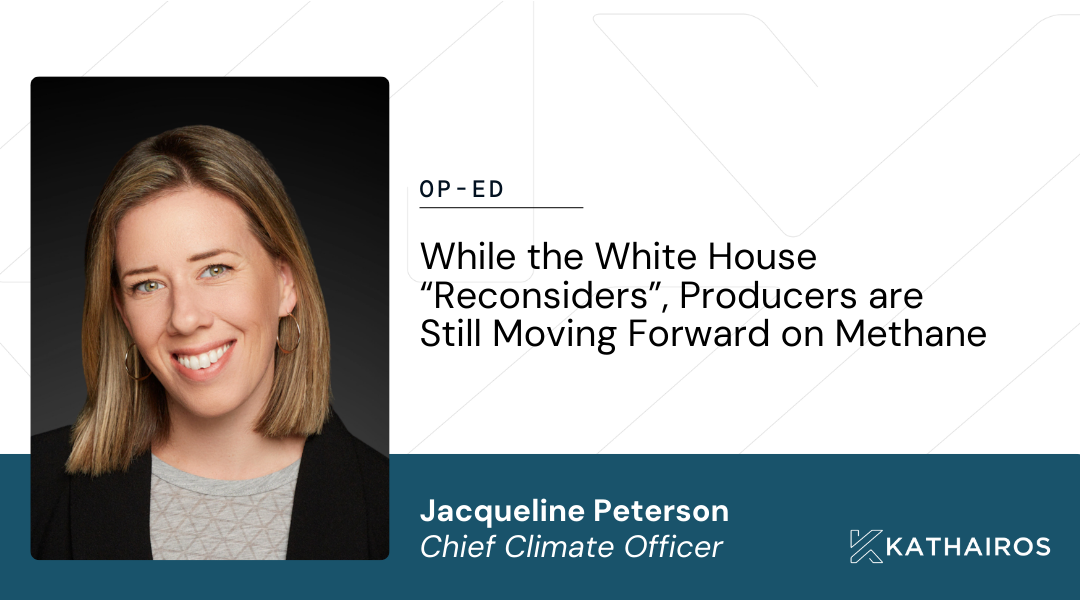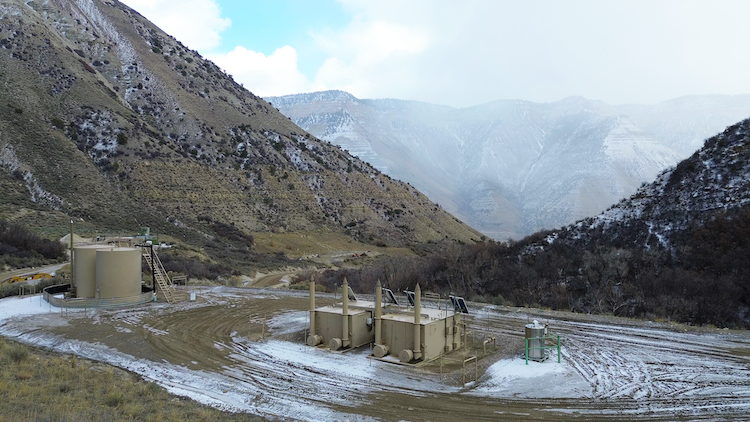
Kathairos has emerged as the leading North American solution for methane elimination from pneumatics, with more than 1,000 systems in operation across North America and over 40 major oil and gas producer partners.
In this post
Overview
Subpart OOOOc of the EPA’s methane regulations targets greenhouse gas emissions from established facilities within the oil and natural gas industry. This part of the "Standards of Performance for New, Reconstructed, and Modified Sources and Emissions Guidelines for Existing Sources: Oil and Natural Gas Sector Climate Review" focuses particularly on methane. It requires states to develop emission guidelines that existing facilities must follow, impacting a broad range of equipment, including pneumatic controllers and pumps. This regulation reflects the EPA's ongoing commitment to significantly reducing the oil and gas sector’s greenhouse gas emissions.
Equipment Focus: Pneumatic Controllers and Pumps
Pneumatic controllers, widely used to regulate operational parameters like pressure and temperature, are major sources of methane emissions. Under Subpart OOOOc, these controllers at facilities outside of Alaska must be converted to non-emitting alternatives, such as nitrogen systems. Pumps are also required to reduce methane emissions by at least 95%, enforcing stringent control measures across the industry.
Eligibility and Compliance
The regulation applies to existing oil and gas facilities constructed, modified, or reconstructed on or before December 6, 2022. These facilities are now required to align with the new standards laid out in state-developed plans, contrasting with newer facilities which are governed by different standards.
State Plans and Timelines
States have a two-year deadline to submit their plans to the EPA, outlining strategies to curb emissions from existing sources. These plans must detail performance standards and include enforcement mechanisms. Once approved, facilities have three years to comply with the stipulated standards.
Industry Implications
The introduction of Subpart OOOOc is a significant regulatory milestone with extensive implications for the oil and gas industry. Facilities categorized as existing sources will need to critically assess and modify their equipment to meet compliance standards. This transition might require retrofitting or replacing older equipment with newer, low-emission technology.
Conclusion
EPA's Subpart OOOOc is a vital measure for mitigating methane emissions from the existing infrastructure within the oil and gas sector. By setting a framework for state-led implementation, it aims to achieve significant reductions in greenhouse gases, demanding collaboration and adaptation from both the industry and regulatory bodies.
Key Highlights
- Regulation Focus: Targets methane emissions from existing oil and gas facilities.
- Mandatory Upgrades: Requires non-emitting alternatives for pneumatic controllers and a 95% emission reduction in pumps.
- Applicability: Affects facilities built, modified, or reconstructed up to December 6, 2022.
- State-Led Implementation: States must draft and submit emission reduction plans within two years; facilities have three years post-approval to comply.
- Strategic Impact: Emphasizes significant updates in equipment and operational strategies to align with new environmental standards.
- Collaborative Efforts Required: Success hinges on effective partnerships between the state, industry, and other stakeholders to ensure feasible and effective emission reduction.
Explore more posts from Kathairos
.jpg)
Decarb Digest, Issue 01: Discover Why Energy Leaders Aren’t Waiting on Washington

Op-Ed: While the White House “reconsiders”, producers are still moving forward on methane

